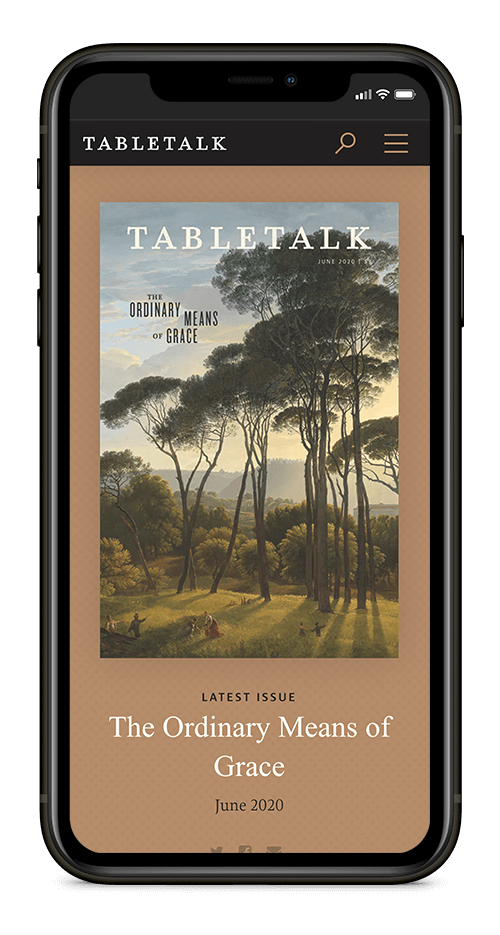
Request your free, three-month trial to Tabletalk magazine. You’ll receive the print issue monthly and gain immediate digital access to decades of archives. This trial is risk-free. No credit card required.
Try Tabletalk NowAlready receive Tabletalk magazine every month?
Verify your email address to gain unlimited access.
Luke 13:31–35
“O Jerusalem, Jerusalem, the city that kills the prophets and stones those who are sent to it! How often would I have gathered your children together as a hen gathers her brood under her wings, and you were not willing!” (v. 34).
Great crowds followed Jesus during His earthly ministry, as people pressed in to hear His teaching and even receive His healing touch (Luke 6:17–19; 8:45; 9:11; 12:54). The gathering of large crowds in the first-century Holy Land tended to make the secular leaders nervous, for crowds could be stirred up to revolt against the Roman authorities. (The Jewish homeland had been under the control of Rome for many decades by the time of Jesus.) Most likely, Herod Antipas wanted to kill Jesus, as we see in today’s passage, because doing away with our Lord would have been the fastest way to get the crowds to disperse and to reduce the likelihood of his subjects’ rebelling against Rome.
Luke tells us in 13:31 that some Pharisees warned Jesus of Herod’s intentions. The Evangelist does not give us the reason that the Pharisees wanted our Savior to know the danger He faced. Perhaps they desired that He leave the region so as to minimize the potential for trouble, but it also might be that they were disciples of Jesus, for some Pharisees did indeed follow Him (e.g., see John 19:39). Either way, Jesus could not be dissuaded from His mission. He instructed the Pharisees to tell “that fox”—Herod—that He must finish His course (Luke 13:32). First-century Jews used “fox” as an epithet meaning “deceiver” or “destroyer,” so this was our Lord’s revealing Herod’s true character. Jesus’ reference to His course as finishing on the “third day” (v. 32) indicates that He saw that His earthly ministry was soon to come to an end, and it may allude to His resurrection.
Coming ever closer to Jerusalem, Jesus uttered a lament over the city, describing His longing to gather its citizens like children and the Jews’ refusal to be gathered. He used an image of a hen gathering her brood of chicks under her wings, which is a strong metaphor for ancients who were well acquainted with livestock. Such an image reminds us that God nurtures His people even as He also rules over and defends them. This text also reminds us that the Lord does not rejoice in the refusal of sinners to be reconciled to Him (Ezek. 18:23). Still, wicked people’s rejection of our Creator’s offer of peace through Jesus Christ has consequences. Jesus warned that the house of Israel would be forsaken until they recognized Him as Savior, as the One who comes in the name of the Lord (Luke 13:35).
Coram Deo Living before the face of God
Jesus did not take joy in Jerusalem’s rejection of the Lord or stop longing for His people to repent so that they would escape destruction. In this, He serves as a model for us. We are tempted to write off people who reject the truth and allow our longing for their redemption to waver. Let us instead continue praying for such individuals and reaching out to them as we are able.
for further study
- Isaiah 49:15
- Ezekiel 33:10–20
- Matthew 23:37–39
- 1 Timothy 2:1–4
the bible in a year
- Psalms 31–33
- Acts 21:17–36